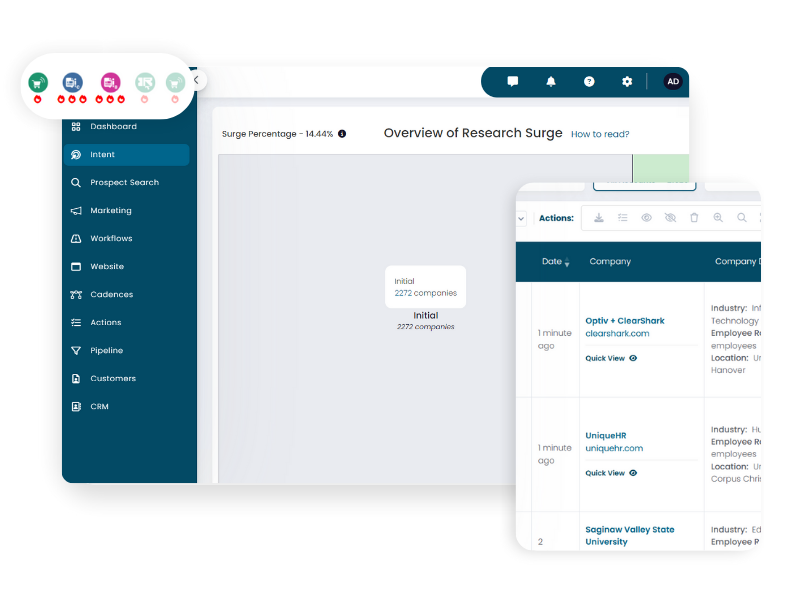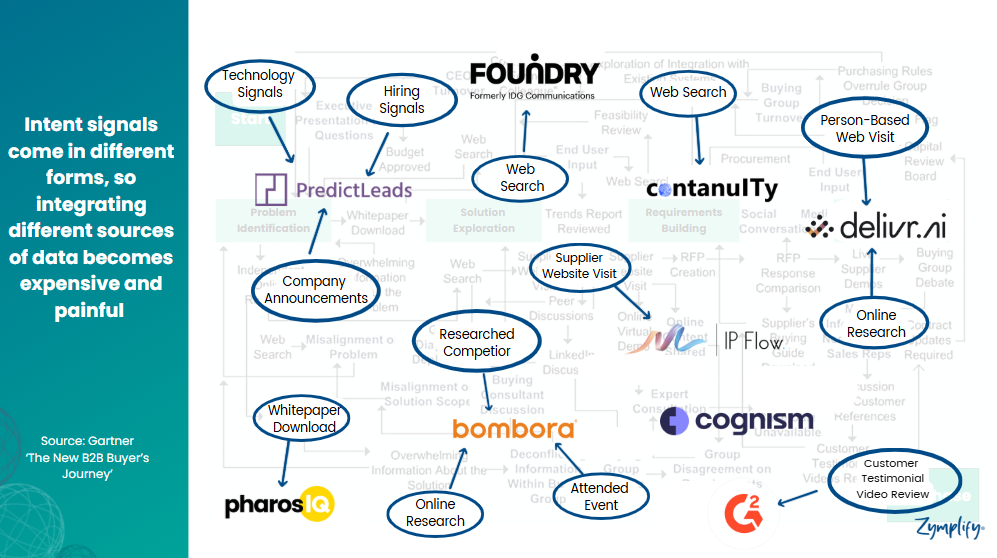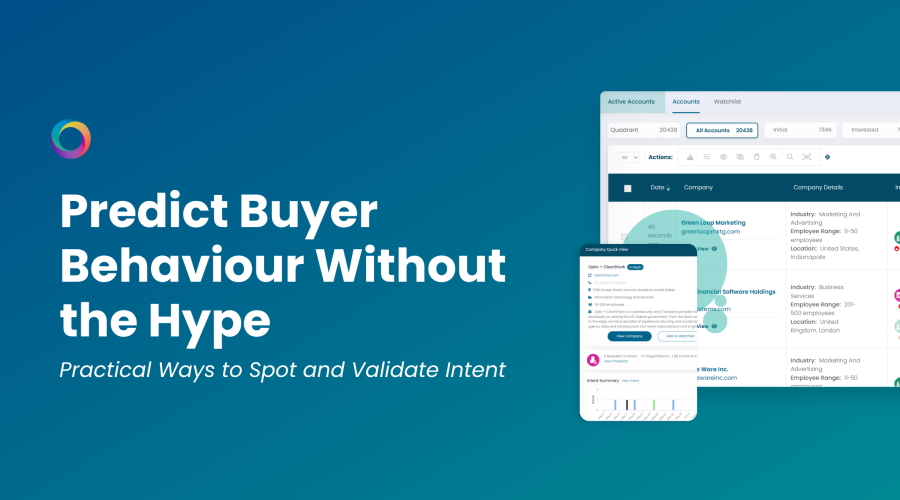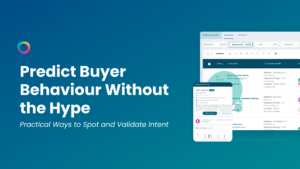Cutting Through the Noise
The term “predictive” gets thrown around a lot in B2B sales and marketing. Unfortunately, it’s often buried under buzzwords, vague promises, or overhyped “AI” claims that don’t deliver measurable results.
At Zymplify, we see predictive GTM as something far more practical:
- It’s about knowing which buyers are most likely to engage now.
- It’s about validating that intent so you act with confidence.
- And it’s about doing it quickly enough that you beat competitors to the conversation.
This is where Zymplify’s Research Quadrant™ and intent prediction algorithm make the difference — not as a magic trick, but as a set of clear, actionable tools for GTM teams.
The Problem With “Wait and See” GTM
Most GTM teams rely on one of two approaches:
- Cold outreach at scale – where timing is hit-or-miss.
- Waiting for inbound leads – where you only catch prospects late in their buying journey.
Both have the same flaw: they lack insight into who is actually in-market right now. By the time you engage, a competitor may already be halfway to closing the deal.
Predictive GTM solves this by using real-time and historical data to flag likely buyers before they fill in a form or take your call.
The Zymplify Research Quadrant™ – The Engine Behind the Predictions
The Research Quadrant™ visualises your entire addressable market based on two axes:
- Fit: How closely the account matches your ICP.
- Intent: How strongly the account’s behaviour indicates active interest.
By plotting every account in this quadrant, you can instantly see:
- High fit + high intent = your hottest opportunities.
- High fit + low intent = nurture for later.
- Low fit + high intent = opportunistic quick wins.
Our algorithm continuously ingests 20+ sources of intent signals, scoring each account’s activity against relevant topics, competitor searches, and engagement patterns.

Validating the Signals — No More Chasing Ghost Leads
Not every spike in activity is a sign of a real buying cycle. That’s why our platform doesn’t stop at surface-level signals.
We validate intent by:
- Signal density – is there a cluster of activity or just a one-off visit?
- Signal recency – did it happen yesterday or six weeks ago?
- Cross-source confirmation – does website behaviour align with 3rd-party research?
This layered approach reduces false positives so you’re chasing fewer dead ends — and spending more time on high-probability opportunities.
3 Practical Predictive Use Cases for GTM Teams
-
Prioritising Daily Outreach Lists
Each morning, sales reps can pull a ranked list of accounts showing the most relevant, recent intent activity. Instead of sifting through a generic CRM view, they start with the 20–30 accounts most likely to book a meeting today.
Example:
An account in your TAM spikes in competitor comparisons AND your pricing page visits within 48 hours. That’s an instant candidate for outreach — with a personalised email referencing the exact topics they’ve been researching.
-
Triggering Personalised Campaigns
Marketing can set automated workflows so that when an account enters the “High Fit + High Intent” quadrant, it’s immediately dropped into a personalised nurture sequence.
Example:
A software company targeting HR directors sees an account researching “HR automation” across three intent sources. The automation kicks in:
- Email with a case study from their industry.
- Retargeting ads focused on ROI benefits.
- LinkedIn connection request from an SDR.
-
Spotting Upsell or Churn Risks in Existing Customers
Predictive GTM isn’t just for net-new pipeline — it’s just as valuable for protecting revenue.
Example:
A current customer starts researching competitor pricing. The system flags this as a churn risk, prompting customer success to reach out with an optimisation session and renewal incentives.
Common Mistakes to Avoid in Predictive GTM
- Relying on one data source – A single feed can’t tell the full story. Our multi-source approach eliminates blind spots.
- Ignoring timing – Acting three weeks after a signal is often too late. Predictive is only useful if it’s paired with real-time activation.
- Treating predictions as certainties – Predictions guide focus, but conversations close deals. Use them to prioritise, not replace, human engagement.

Mini Case Study — Beating the Competition by 2 Weeks
One Zymplify customer in the B2B SaaS space used the Research Quadrant™ to prioritise outreach. They spotted a high-fit account surging in competitor research and product-related topics.
- Day 1: Intent spike detected, account moves to “High Fit + High Intent.”
- Day 2: SDR sends tailored email and connects on LinkedIn.
- Day 4: Demo booked.
- Day 15: Opportunity in pipeline.
The customer later learned they had reached the prospect two weeks before their closest competitor — giving them a first-mover advantage and a stronger negotiating position.
Conclusion: Predictive GTM Without the Noise
Predicting buyer behaviour isn’t about big, abstract promises — it’s about using real, verified signals to be in the right place at the right time.
With Zymplify’s Research Quadrant™ and multi-source intent algorithm, you can:
- See the accounts most likely to engage now.
- Validate their readiness before you invest resources.
- Act while your competitors are still guessing.
⚡ Be first to the buyer, not the last to the pitch
With Zymplify’s GTM Agent, you’ll know who’s in-market, validate the signals that matter, and trigger outreach while your competitors are still figuring it out.
Try it free today and start winning the timing game: https://d36.co/1bV1m





